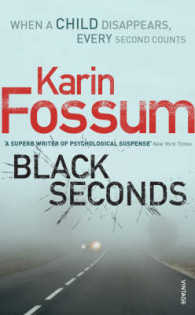- ホーム
- > 洋書
- > 英文書
- > Science / Mathematics
基本説明
Presents the latest results of research in crop improvement as well as in molecular and cellular activities in rice. It consists of 26 chapters and is divided into the following four sections: Genome-wide and genome-based research; Signal transduction and development; Evolution and ecology; and Improvement of rice.
Full Description
Rice (Oryza sativa) is one of the most important staple food crops in the world. Breeding efforts to improve the agronomical quality of rice have been conducted, and studies on rice from the viewpoint of basic biological interest have also been carried out. In 1991, a book entitled Rice (edited by Dr. Bajaj) was published as the 14th volume in the series Biotechnology in Agriculture and Forestry (BAF), detailing rice research activities at that time, and focusing mainly on cell and tissue culture and genetic variability. Studies on rice have fundamentally advanced since then, whose outcomes are mentioned below. This is a good reason to compile a new volume on rice. The situation regarding rice research has markedly changed in the last 16 years. First, the genomic sequences of rice were completely determined by the International Rice Genome Sequencing Project in 2004. Since the genome sequence of Arabidopsis thaliana had been determined in 2000, rice became the second species in the seed plants to have its genome well understood. Second, the technology to transform rice by the Agrobacterium-mediated method was developed and is now established. In classical phytopathology, Poaceae (including rice) has not been considered as a host for Agrobacterium. This transformation method is relatively easy and reproducible as compared to conventional transformation methods using protoplasts, and is now widely used in rice research.
Contents
Genome-wide and Genome-based Research.- The Rice Genome Sequence as an Indispensable Tool for Crop Improvement.- Bioinformatics and Database of the Rice Genome.- Sequencing-based Measurements of mRNA and Small RNA.- Microarray-based Approaches to Rice Transcriptome Analysis.- High-throughput Transcriptome Analysis in Rice from a Genomic Perspective.- Active Transposons in Rice.- Homologous Recombination-dependent Gene Targeting and an Active DNA Transposon nDart-promoted Gene Tagging for Rice Functional Genomics.- T-DNA Tagging Lines.- Frequent DNA Transfer Among Mitochondrial, Plastid and Nuclear Genomes of Rice During Evolution.- Signal Transduction and Development.- Hormonal Signal Transduction in Rice.- Rice Heterotrimeric G Protein Signaling.- Genetic Control of Embryogenesis in Rice.- Photoperiodic Flowering in Rice.- Genetic Regulation of Meristem Maintenance and Organ Specification in Rice Flower Development.- Genetic Dissection of Sexual Reproduction in Rice (Oryza sativa L.).- Molecular Studies on Cytoplasmic Male Sterility-associated Genes and Restorer Genes in Rice.- Evolution and Ecology.- Phylogeny and Biogeography of the Genus Oryza.- Chromosome and Genome Evolution in Rice.- Genetics of Speciation in Rice.- Genetic Diversity in Wild Relatives of Rice and Domestication Events.- Rice Retroposon, p-SINE, and Its Use for Classification and Identification of Oryza Species.- Improvement of Rice.- Detection and Molecular Cloning of Genes Underlying Quantitative Phenotypic Variations in Rice.- Rice Yielding and Plant Hormones.- Regulation of Iron and Zinc Uptake and Translocation in Rice.- Abiotic Stress.- Health-promoting Transgenic Rice: Application of Rice Seeds as a Direct Delivery System for Bioactive Peptides in Human Health.






